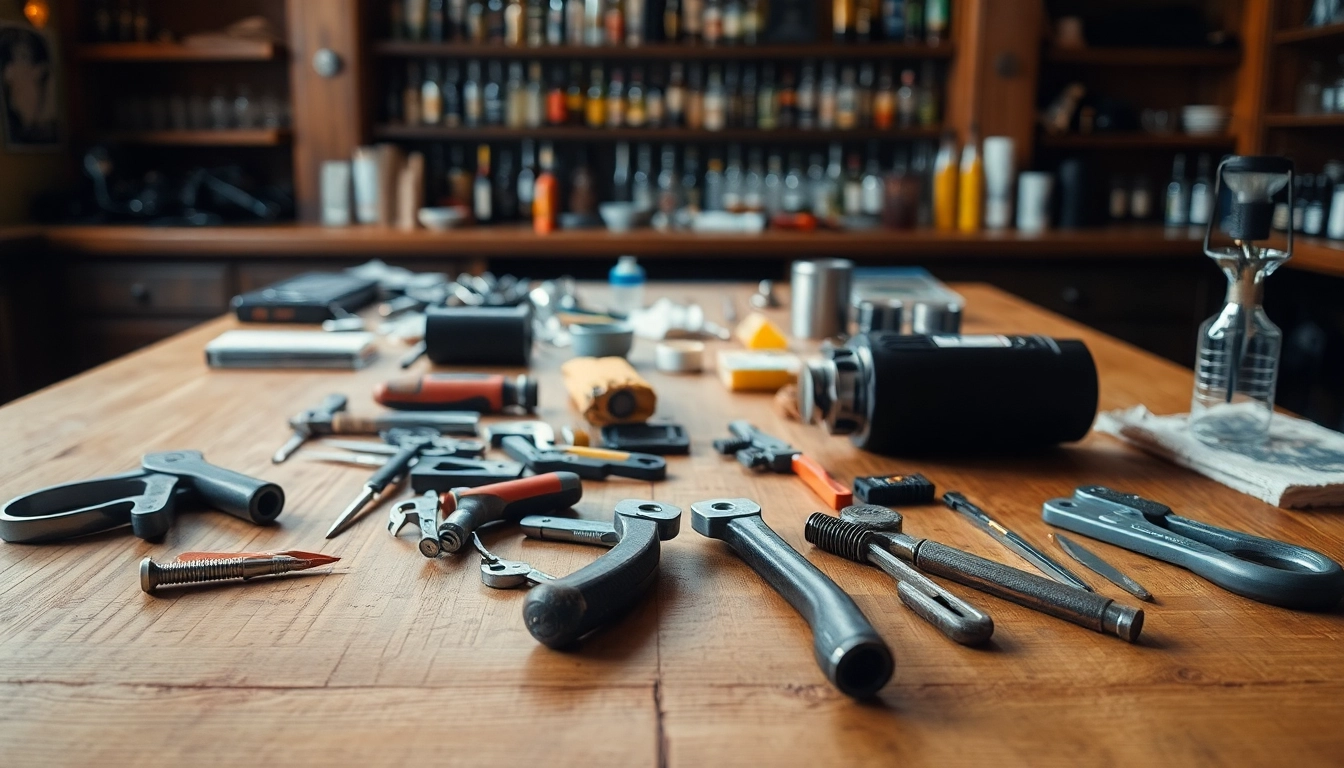Understanding Interior Painting Basics
What is Interior Painting?
Interior painting involves the artistic application of paint to the walls and ceilings inside a structure. This practice is crucial for both aesthetic appeal and protection against wear and tear. Proper interior painting transforms a space, giving it character, warmth, and personality.
Reasons for Interior Painting
There are numerous reasons homeowners and businesses choose to undertake interior painting projects. Some of the most common reasons include:
- Improving Aesthetics: A fresh coat of paint can breathe new life into a dull environment.
- Protecting Surfaces: Paint adds a protective layer to walls, helping to shield them from damage due to moisture, mold, or grease.
- Increasing Value: Well-painted homes can enhance property value, making them more appealing to potential buyers.
- Reflecting Personal Style: Painting allows you to express your individual tastes and preferences through color selection and design.
Types of Interior Paint Finishes
Choosing the right paint finish is just as important as selecting the color. Each finish offers a different aesthetic and functional benefit:
- Flat: This finish has no shine, making it ideal for hiding wall imperfections. However, it is less durable and harder to clean.
- Eggshell: A popular choice for living rooms and bedrooms, eggshell provides a soft sheen and a balance between durability and appearance.
- Satin: Satin finishes offer more sheen and are excellent for high-traffic areas, as they can resist moisture and stains better than flat finishes.
- Semigloss: This finish is often used on trim and moldings, offering high durability and washability.
- Gloss: The most reflective finish, gloss paint is suitable for surfaces that see a lot of wear, like door frames and cabinets.
Choosing the Right Colors for Your Interior
Color Theory and Its Impact
Understanding color theory is crucial when selecting paint colors for your interior. Colors can influence emotions, perceptions, and even behavior. For instance, warm colors such as reds, oranges, and yellows tend to evoke feelings of warmth and cheerfulness, while cool colors like blues and greens can create a sense of calm and tranquility. Proper application of color theory can lead to environments that enhance mood and engagement.
Popular Interior Painting Color Trends
Staying updated with color trends can help ensure that your interior space aligns with contemporary styles. Some current trending colors include:
- Earth Tones: Accessible and inviting, these hues create a cozy atmosphere.
- Bold Greens: Bringing the outdoors in, greens lend a refreshing, vibrant touch.
- Soft Neutrals: Shades of beige, taupe, and gray serve as excellent backdrops for other decor elements.
- Pastels: Soft shades like blush pink and powder blue can add a playful yet sophisticated touch.
Creating a Color Palette for Your Space
Creating a cohesive color palette ensures that your interior design flows seamlessly from room to room. Here’s how to develop your unique palette:
- Select a Base Color: Start with a neutral base for versatility.
- Choose Complementary Colors: Add two or three colors that complement your base.
- Consider Accents: Include one or two accent colors to add visual interest.
- Test Samples: Always paint small swatches on your walls to see how colors look in your unique lighting.
Essential Tools and Materials for Interior Painting
List of Must-Have Painting Supplies
To achieve a professional look, you will need the right tools and supplies. An essential painting supplies list includes:
- High-quality paintbrushes (various sizes)
- Rollers and roller covers
- Painter’s tape
- Drop cloths or plastic sheeting
- Paint trays
- Putty knife and spackling compound for surface repair
- Sandpaper for smoothing
- Paint can opener and stir stick
- Ladder for reaching high areas
Quality Paint Brands to Consider
Choosing high-quality paints can affect the longevity and appearance of your interior project. Recommended brands include:
- Behr: Known for its durability and variety of colors.
- Benjamin Moore: Offers a vast range of paint shades and exceptional finish.
- Sherwin-Williams: Renowned for innovative colors and high-performance products.
- Valspar: Provides durable options with an extensive color palette at competitive prices.
Environmental Considerations in Painting
As environmental awareness rises, so does the demand for eco-friendly painting options. Look for paints labeled low-VOC (volatile organic compounds), which minimize harmful emissions. Additionally, consider using sustainable painting supplies and recycling leftover paint to minimize waste.
Best Practices for Interior Painting
Preparing Your Space for Painting
Preparation is key to a successful interior painting project. Follow these steps to ensure optimal results:
- Clear the Area: Remove furniture or cover it with drop cloths.
- Clean the Walls: Dust and wash the surfaces to ensure proper adhesion of paint.
- Patch Holes and Cracks: Use spackling compound to fill imperfections and sand smooth once dry.
- Apply Primer: If you’re changing the color significantly or painting over a dark surface, primer should be applied for better coverage.
Step-by-Step Painting Process
Once preparation is complete, adhere to the following steps for a smooth painting experience:
- Start with the Ceiling: Use a roller for large areas and a brush for edges.
- Proceed to Walls: Apply paint using a roller; a brush works well for corners.
- Paint Trim and Details Last: Use a fine brush for trim and doors to achieve crisp lines.
- Let It Dry: Follow the manufacturer’s instructions regarding drying time between coats.
Common Mistakes to Avoid
Avoid the following common pitfalls to ensure your interior painting project goes smoothly:
- Skipping prep work, which affects the quality of the finish.
- Using low-quality tools that fail to deliver a professional appearance.
- Failing to test colors in different lighting conditions, which can lead to disappointment.
- Rushing the process—good painting takes time.
Cost Considerations for Interior Painting
Averaging Interior Painting Costs by Room
The cost of interior painting can vary significantly based on several factors. Here’s a breakdown of average costs by room size:
| Room Type | Size (sq.ft.) | Average Cost ($) |
|---|---|---|
| Bathroom | 20 – 100 | 60 – 400 |
| Bedroom | 200 – 310 | 600 – 1,240 |
| Kitchen | 200 – 360 | 600 – 1,320 |
| Living Room | 300 – 400 | 900 – 1,600 |
Factors Affecting the Cost of Interior Painting
Several factors can influence the overall cost of your painting project:
- Size of the Space: Larger rooms require more paint and time.
- Type of Paint: Higher quality paints generally cost more, but they can offer better coverage and durability.
- Labor Costs: Hiring professionals can significantly increase the total cost, but their expertise can result in a more polished finish.
- Condition of Surfaces: Walls that require additional prep work—such as repair or priming—will increase expenses.
DIY vs. Hiring Professionals: What to Consider
Choosing between a DIY approach and hiring professional painters involves several considerations:
- Time and Skill Level: DIY projects can be rewarding but require time and skill. If you’re inexperienced, you may need to allocate extra time for learning the process.
- Cost Savings: DIY can save on labor costs, but buying the right materials and tools can add up.
- Quality of Finish: Professionals can deliver a more polished result due to their experience and access to better tools.


